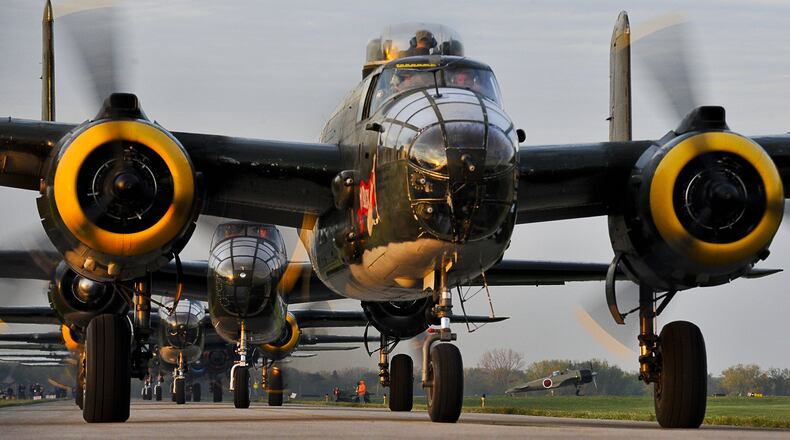I’m so excited that this commemoration will be near us.
On April 15 and 16, the remaining B-25 Mitchell bombers will fly in from points all over the continental states to Grimes Airport on the north end of Urbana on State Route 68.
As many as 17 of the B-25’s will be on display. The nose art is fantastic and each airplane has a story to tell. There aren’t many Mitchell Bombers left.
Cottrel: DNA test a golden ticket for family history
The airport will be open from 9 a.m. to 5 p.m. both days. There is no set admission, but donations at the gate will help pay for fuel, oil, and event costs, according to airport manager, Elton Cultice.
At 7:30 a.m. on April 17, all the B-25s will take off one at a time just like they did for bombing runs in WWII. This time they will be going to the US Air Force Museum.
During this transit they should be flying over northwestern Clark County. If the weather cooperates, our eyes and ears are in for a treat.
At the Air Force museum, they will be on display again April 17 and on the morning of April 18. There will be ceremonies, displays, and presentations to commemorate the anniversary. Check with the US Air Force Museum for their schedule.
On April 18, the bombers will once again line up for takeoff, this time at the Air Force Museum. Then they will fly over the Museum together at 2:30 p.m. The memorial service will follow and conclude with a B-1 bomber flyover from the 34th and 37th Bomb Squadrons.
Cottrel: Winter makes decorating grave site a challenge
Seeing 17 B-25s in formation followed by a B-1 fly over will be a once in a lifetime event and I wholeheartedly recommend that everyone make the effort to see it. If you can, take the kids. The next generation needs to know about this amazing chapter of our history.
Now, it might be hard for younger generations to understand why the 75th Anniversary of the Doolittle Raid is such a big deal.
In 1942, Americans were worried. Our military had taken a terrible hit at Pearl Harbor. We were suddenly in a war and we were not prepared for it. Morale was very low.
Something had to be done to show the world that America had “only just begun to fight.” The Doolittle Raid upped the ante with an even bigger surprise.
The Americans took a squadron of B-25 bombers and tied them down on the deck of a carrier, the USS Hornet. These were secretly transported to within striking distance of Japan, something that no one could imagine remotely possible.
Aircraft carriers were a relatively new thing in 1942. People at that time were having a hard time getting their head around what an aircraft carrier could do. They were amazed that fighters could take off and land on the very small decks of carriers. Putting much bigger bombers on a carrier would be in their minds impossible.
The bomber air crews were taking a terrible chance taking off on the extra short carrier runway. None of them had ever taken off from a carrier deck before. Sure, they had practiced on land, but not on a pitching or rolling deck. There were no catapults back then and the sudden drop off into the ocean at the end of the deck would be unforgiving.
Since the B-25s were land-based bombers and not carrier airplanes, they physically were not built to handle carrier landings. This meant the raiders could take off, but there was no way to land. For the bombers it was a one way trip.
Only the extensive training, adaption of equipment, pure grit and determination of the air crews and ships made it work.
Col. Jimmy Doolittle and his men flew their B-25 bombers over Tokyo, dropped their bombs then headed for friendly airfields in China. But they didn’t have enough fuel. The crews either crashed or bailed out. Of the 80 men, three died of injuries, one died of illness, eight were captured, and three were executed. Eventually 73 came home.
Since then, the Doolittle Raiders have been considered some of our greatest heroes. They did the impossible during a dark time in this country. That is why we commemorate what they did and tell their stories to the next generation .
Such bravery, innovation, determination, and skill should never be forgotten.
If you would like to learn more of the fascinating details of the Doolittle Raid there will be a free lecture at 11:30 a.m. Saturday at the Champaign Aviation Museum on the north end of the airport.
About the Author
